This has been Joško’s way since the 2007 vintage. “But is it really the best number of years for ageing your wines?” I ask. I’m thinking of the commitment, the risk, the storage space, the business case for releasing wines earlier…
But Joško is confident and convincing: he tells me he tasted his wines after three years and “they were better; after five years they were even better; and after seven years they were even better”.
So, seven it is and he’s not likely to change that anytime soon.
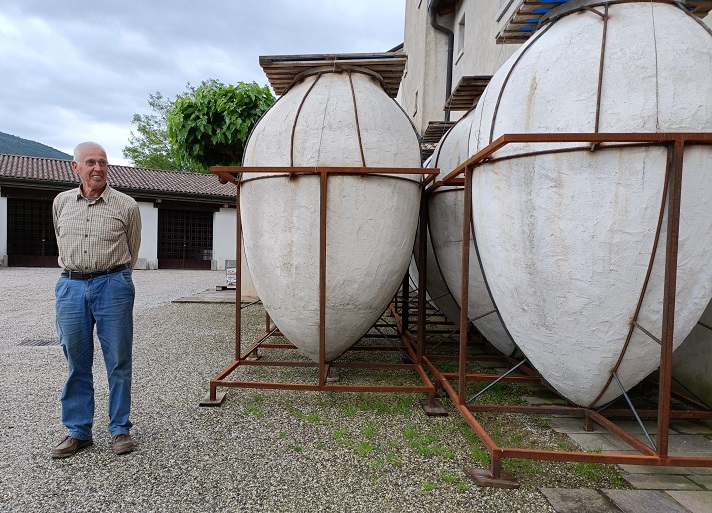
However, after spending time with Joško (above) and his family at their home and winery in Oslavia, a small village in Italy’s Collio region, I get the impression he is more open to change than he may appear initially – as long as the changes improve the Gravner wines. I also get the impression this is a man seeking perfection, despite knowing “winemaking is like climbing a mountain where you never reach the top” – because nature will never fully cooperate with your ambitions. But still he continues to climb along routes that “respect the Truth of Nature”.
His latest path involves large glass tanks.
Eight glass tanks
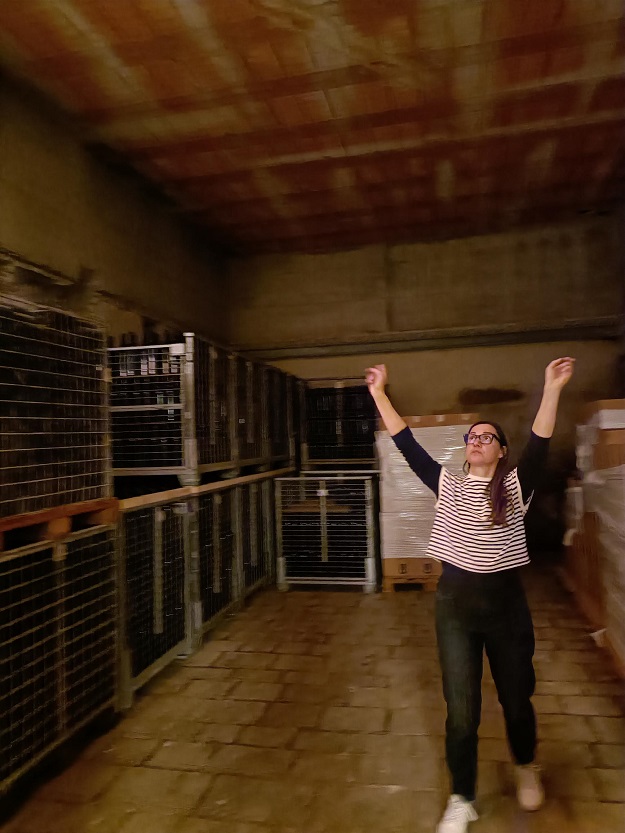
This week, Joško Gravner will order eight large glass tanks from two Italian companies (EnoKube and Pfaudler) – after two years of development. Mateja, Joško’s daughter, shows me where they will go (above) when they arrive in six to eight months’ time.
Joško recalls his father saying there were only two materials to put wine in – oak and glass. Then Joško discovered clay and popularised the use of qvevri among natural and amber winemakers, believing there was synergy in vinifying the fruit from a plant in a clay vessel buried in the ground. But for the last 20 years, the 72-year-old winemaker has been thinking about ageing his wines partially in glass.
The current protocol, according to Mateja, is six months in a qvevri on skins, an additional six months in a qvevri without skins, six years in large oak barrels and six months in bottles.
In reality it’s more like four or five months on skins. But it’s always one year in qvevri, racking the wine to wood before the next harvest.
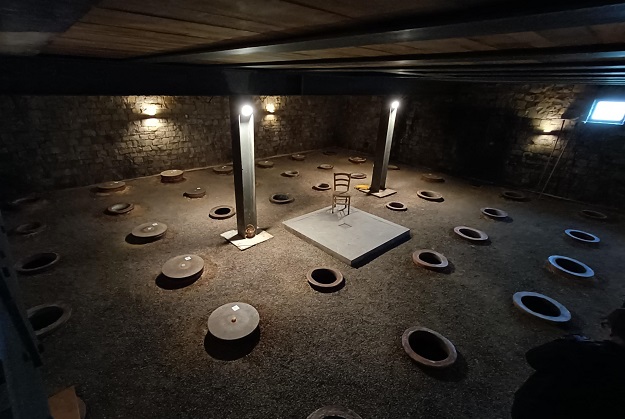
With the new glass vessels, they will reduce the time in oak from six to three or four years and age in glass for two to three years.
Two grapes
Joško started focusing on the indigenous grape varieties Ribolla Gialla (white) and Pignolo (red) 12 years ago. “If you own something special, it’s better to focus only on that,” he explains.As we taste some archive wines together, he recalls tasting all the wines from barrels with his father Jožef. When they got to the Ribolla – after sampling the Chardonnay, Sauvignon Blanc and Pinot Grigio – his father would smile and say: “This is our wine.”
Joško knew Ribolla was the best grape in this part of northeast Italy, near the border with Slovenia, but he was also aware that it wasn’t producing the best wines.
Realising that Ribolla “is all about the skin”, Joško started experimenting with fermenting on skins after the disastrous 1996 vintage. It was the first step in a return to the methods used by his father and grandfather. He ditched stainless-steel tanks with their temperature-control jackets, rolled out the barriques, and returned to using large-format barrels and wild ferments. Then, after a trip to Georgia, he adopted the ancient method of making wine in terracotta vessels “cradled by the land” – and changed the landscape of modern winemaking.
So, since the 2001 vintage, grapes have been fermented on skins in qvevri using native yeasts and no temperature control. At first the maceration time was four days, now it’s up to six months.
Three vineyards
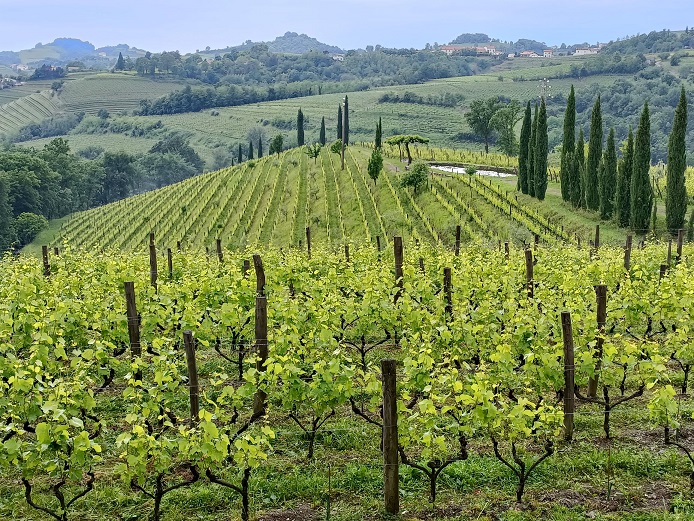
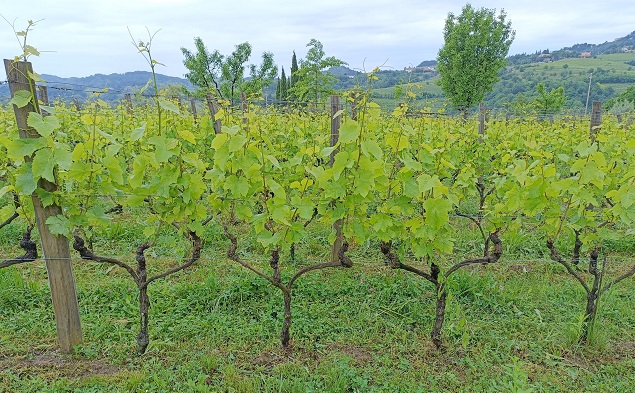
The handpicked grapes come from the family’s own vineyards. There are three: Runk in Oslavia (above), and two across the Slovenian border – in Hum and Dedno.
After consulting pruning experts Marco Simonit and Pierpaolo Sirch and noting that Ribolla Gialla vines were more in balance when the shoots were closer to old wood, Joško started training the vines using this albarello system (above) in 2004/5. Density is 8,000 vines per hectare; 7,000 on the steep terraces in Slovenia. There is a 145cm gap between the rows and 85cm between the plants. There are larger gaps than before between the terraces to aid biodiversity. The biodiversity measures include cypress trees planted as windbreaks to protect young shoots from the ferocious bora wind that rips through the Isonzo River valley. The wind also explains why the vines are trained relatively low.
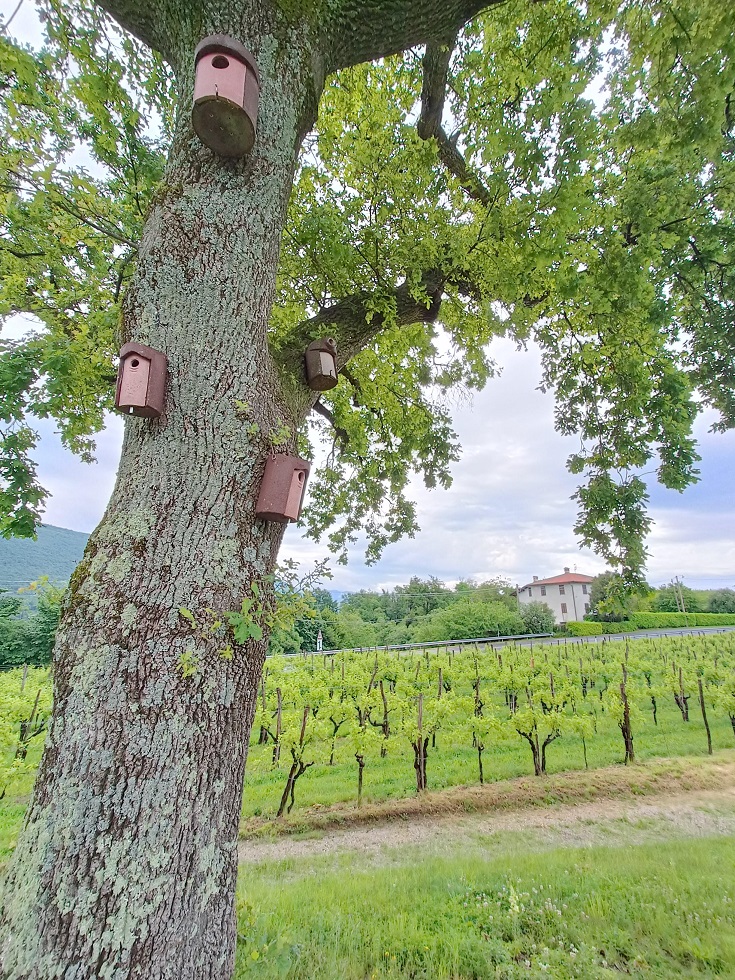
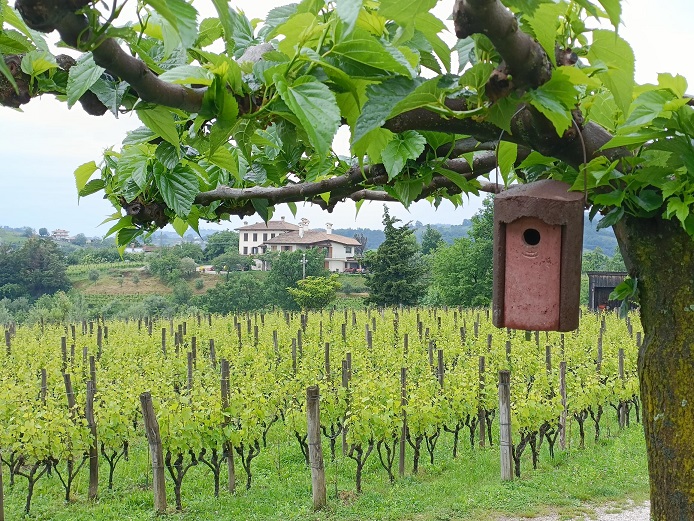
There are also olive, cherry, apricot, apple, ash, mulberry and chestnut trees, which feed the wildlife. Several trees have birdboxes of different sizes for different species. The boxes are cleaned every two years. Mateja says it’s a job the workers “hate”.
Gravner owns 32ha of land, of which 18ha are planted to vines. Of the 15ha that are currently productive – producing about 20hl/ha – 13 are planted to Ribolla. Over the coming decade, they plan to grow to a maximum of 21-22ha of vines – for an annual output of 35,000 to 40,000 bottles. That’s what they can comfortably manage in the cellar.
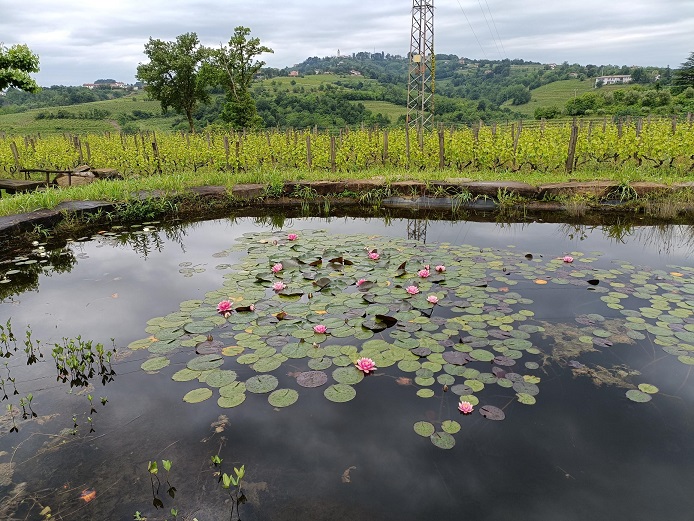
At 8ha, Runk (above) is the largest vineyard. Like all the vineyards, it has a pond teeming with frogs and insects. Mateja says it provides water for the birds, which only eat grapes “when they are thirsty”.
The idea is to bring as much “different life” back to the vineyard as possible. It appears as if the reason is altruistic – because it’s the right thing to do, rather than because it will improve the quality of the wines. “We should care,” Mateja comments.
Gravner sprays copper and sulphur but stops at the end of July. Ten to 12 people are employed for the tucking in, twisting the shoots around the top wire (rather than trimming them), and green harvesting – reducing the vines to one bunch per shoot. They used to leave six or seven bunches per vine but now – after a string of wet autumns – they leave ten. “At least with ten you hope to bring at least five to the cellar,” Joško says.
Double pruning
Pruning is done twice. The pre-pruning cut – from a standing position – takes everything down to the fruiting wire and removes the bulk of last year’s shoots. The more considered second cut – from sitting on a small trolley – is carried out as late as possible. The second cut gives the workers more time to concentrate on each individual plant.The garden-like vineyards are farmed according to biodynamic principles and have not seen a chemical fertiliser for 29 years. However, there is no mention of biodynamics on the simple label because Joško has tasted too many faulty biodynamic wines and farms this way because he thinks it’s best for his land, soil, and vines – he doesn’t do it “for marketing”.
The grapes come in very ripe, handpicked about two weeks later than many producers in the region, over 15-17 consecutive days. Joško believes the longer hang-time leads to better quality and accepts the risk of rot. “There isn’t quality without risk,” he states.
After tasting wines from 2010 to 2016, I reach the same conclusion as Joško – that my favourite vintages have an element of botrytis. But it takes skilled and experienced pickers – and longer – to ensure that they can tell the difference between noble rot and bunch rot.
First time
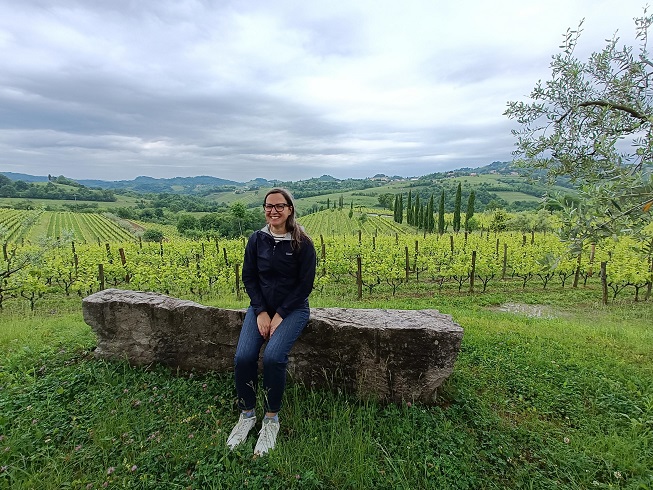
After touring the vineyards with Mateja (above), I’m greeted at the winery by Joško – who immediately air-jets my shoes.
He believes two of the most important things in winemaking are cleanliness and attentiveness.
The tour of the winery is conventional – following the route of the grapes from reception to bottling and storage.
It’s the simplest winery I’ve seen. There are no fancy presses or high-tech sorting machines. No lab. And no shiny tanks.
Joško says when he made the big change in winemaking style in 1997, he had a choice: to follow the market or make wine in the most honest way possible.
One way
Joško started making low-intervention, skin-contact wines when “the market was not asking for a new category,” Mateja points out.Some critics and customers thought Joško had gone crazy in changing his style so drastically, but he stuck by his conviction that these techniques were best for his grapes and wine.
Over the years, he has settled on the following protocol.
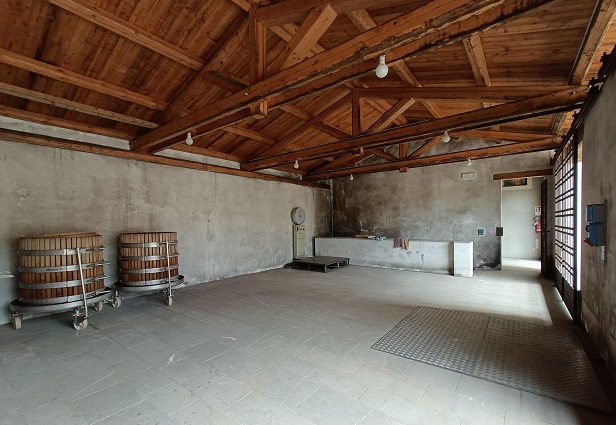
When the grapes come into the reception area (above) in 25kg crates, they are weighed for official reasons and to give an indication of the total volume. But this is as far as the analysis goes. Joško’s view is that if you can’t change things, it’s better not to know.
The destemmed and crushed grapes drop through the trapdoor into the qvevris. Qvevri sizes range from 800 to 2,500L. No yeast is added and the only temperature control is from the qvevris being interred in the ground.
Punchdowns are six times a day during the fermentation “to maximise everything”, provide oxygen for the native yeasts, allow the heat to escape and relieve the pressure of the cap on the most fragile part of the qvevri, the neck.
Fermentation continues at its own pace and has completed after 14 months in one case but usually the wine is taken off the skins after three to five months.
Then, the wine is pumped to a large oak barrel and the skins are removed by hand to a basket press. The pressed juice rejoins the wine and is left to settle for a couple of days in the large oak barrel before going back into the qvevri for the rest of the year.
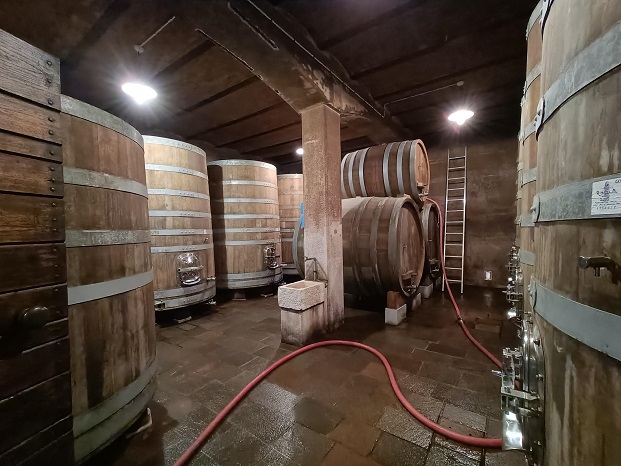
Before the next harvest, the wine is racked to large casks (12, 48 or 60hl) made of Slavonian oak, and left for six years to mature and clarify naturally. Joško likes the micro-oxygenation that comes from wood.
The wine is checked every two or three weeks during its elevage in qvevri and oak. Sometimes it’s just a matter of checking the levels without tasting.
Special parcels, kept separate in smaller qvevri and barrels, are aged for 14 years before bottling.
The wines are bottled “on a waning moon” without fining or filtration “when they are ready and in balance; we don’t force it,” Mateja says.
As for protection, Mateja says they use 2g of potassium bisulphate per 100kg of grapes on arrival and check/adjust the level each time the wine is racked. They look to bottle with 15-18mg/L of free sulphur – which is their main concern – and this typically means total sulphur of 40-90mg/L.
They use natural corks. Joško says he would rather risk cork taint than have his wines encounter the chemicals used in technical stoppers. “If you have dogs indoors, you accept the risk of fleas,” is his analogy.
Some stems
The elegant 2016 has 15-20% stems added. They were mature that year. The stems give “softer tannins than wood” and more tannins – so fewer sulphites are required. This small proportion of grapes was crushed but not destemmed.18 qvevri outside
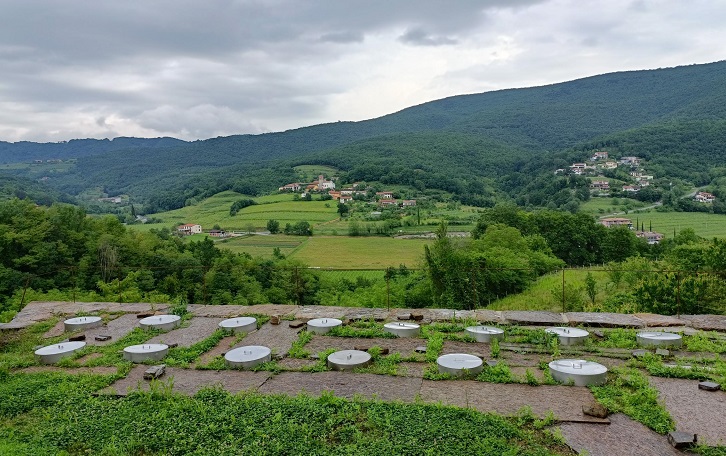
We reported on Gravner’s plans to create an amphorae garden in 2020.
18 amphorae have now been planted in a small plot outside the winery (above). More stand ready to go in the ground. At 2,500-2,800L, these are larger than the ones in the Posto delle Anfore, where the height of the ceiling limits the size to 2,500L.
Asked if they have noticed any difference between the wines fermented outside and inside, Mateja responds: “It’s too early”. The wine currently comes inside once it comes off skins.
40,000 bottles
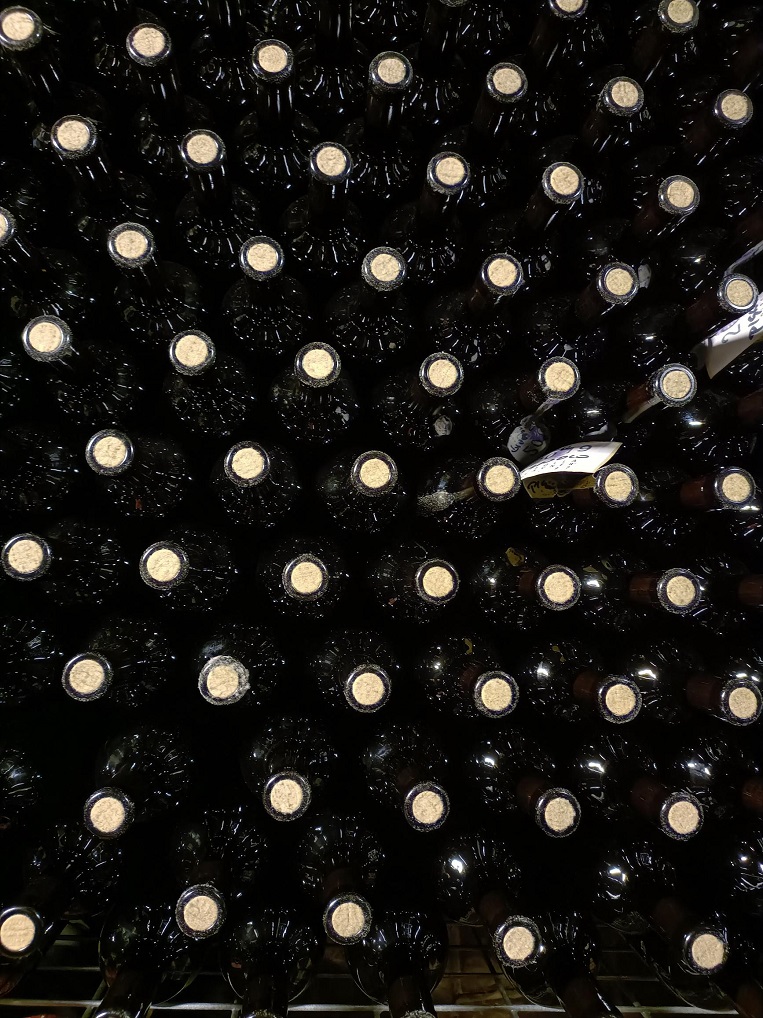
The newer releases are stored upright – another sign of challenging convention in the pursuit of excellence. Joško reasons that natural cork, being “a kind of wood”, should stay humid but not wet.
Gravner wines sell out quickly on release. The target is 40,000 bottles a year, but production ranges from 32,000 in 2011 to 18,000 in 2012.
During the winery tour I meet Mateja’s son, Gregor, topping up the barrels. Gregor, the fifth generation of winemakers at the family home and winery, Lenzuolo Bianco di Oslavia, reiterates the family line: they are all about quality and not quantity.
I ask if he has his own views regarding winemaking. He says they are “very focused on the same destination”, which is improving the quality of the wines.
We go on to discuss the possibility of Joško retiring. Gregor doesn’t believe his grandfather will ever retire: “He will die in the vineyards.”
It would be hard to think of a more fitting resting place for the winemaker who showed the world there is another way – that sometimes we should glance down from the mountain onto the paths trodden by others.


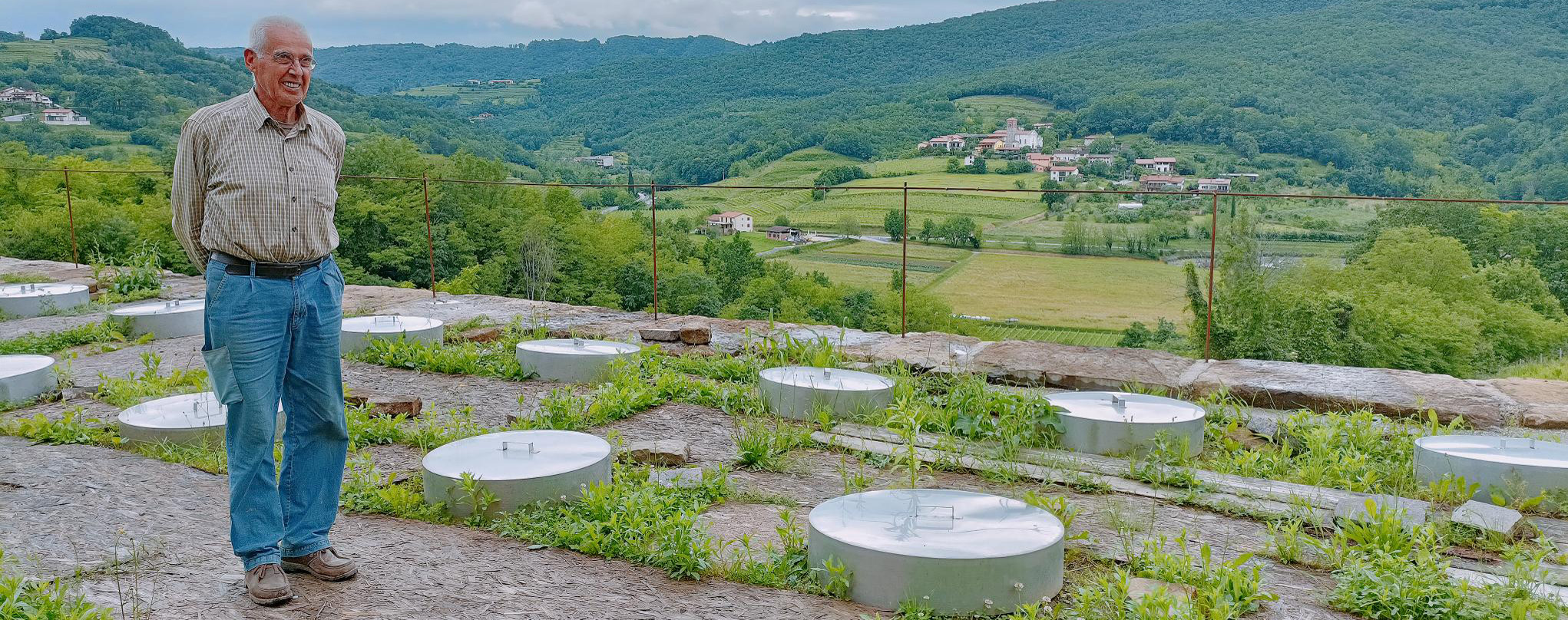










.png)






